
Welcome to the biweekly electronic newsletter from Stanford Bio-X for members of the Bio-X Corporate Forum. Please contact Dr. Hanwei Li, the Bio-X Corporate Forum Liaison if you would like to be added or removed from this distribution list, or if you have any questions about Stanford Bio-X or Stanford University.
Highlights
** On October 9, 2013, Bio-X celebrated the 10th Anniversary of the James H. Clark Center, the hub of Bio-X. Check out CLARK CENTER @ 10X as well as the Bio-X Timeline over the last 15 years!!
** Check out the article by Stanford President John Hennessy in the Nov/Dec 2013 issue of the Stanford Magazine on Bio-X and the Clark Center, "A Cauldron of Innovation".
Bio-X Core Programs
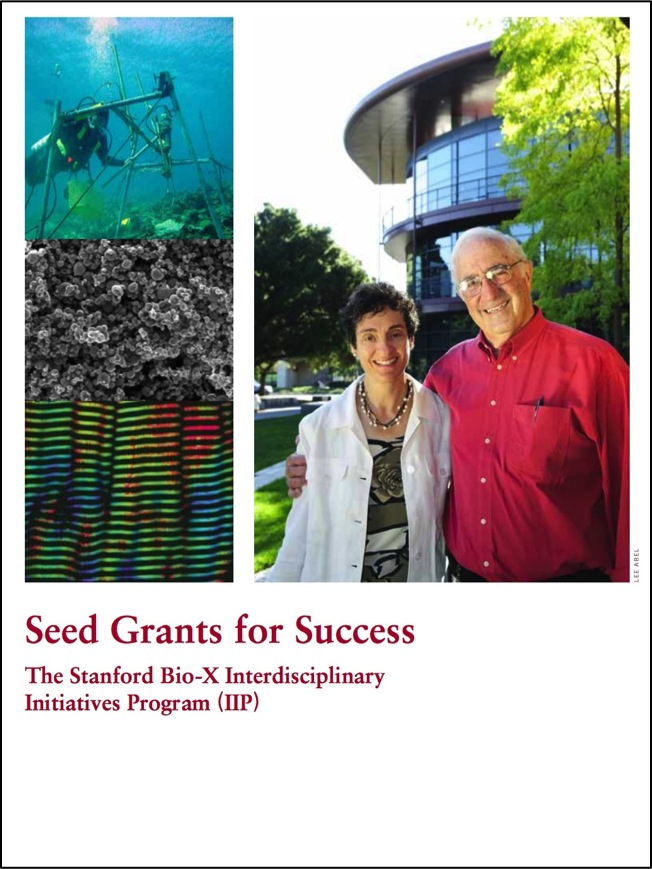 SEED GRANTS FOR SUCCESS - Stanford Bio-X Interdisciplinary Initiatives Program (IIP) SEED GRANTS FOR SUCCESS - Stanford Bio-X Interdisciplinary Initiatives Program (IIP)The Bio-X Interdisciplinary Initiatives Program represents a key Stanford Initiative to address challenges in human health. Currently, the IIP awards approximately $4 million every other year in the form of two-year grants averaging about $200,000 each. From its inception in 2000 through the beginning of the seventh round in 2014, the program has provided critical early-stage funding to 164 different interdisciplinary projects, involving collaborations from over 750 faculty members, and creating over 700 teams from six different Stanford schools. From just the first 6 rounds, the IIP awards have resulted in a 10-fold-plus return on investment, as well as hundreds of publications, dozens of patents filed, and most importantly, the acceleration of scientific discovery and innovation. In 2014, Bio-X started it's 7th round of the Bio-X IIP Seed Grants Program, and 22 newly awarded projects were selected from 142 Letters of Intent (LOIs)! This has been the largest number of LOIs that Bio-X has received. Please go here to check out the newly awarded projects. Competition was intense, and the selection criteria included innovation, high-reward, and new interdisciplinary collaborations. (To view the 142 other IIP projects that have been funded from the previous 6 rounds, please click here.) |
 Bio-X FELLOWSHIPS Bio-X FELLOWSHIPSEvery year, graduate students and postdoctoral scholars of Bio-X affiliated faculty are highly encouraged to apply for the Bio-X Fellowships, which are awarded to research projects that are interdisciplinary and utilize the technologies of different fields to solve different biological questions. Students are encouraged to work collaboratively with professors of different departments, thus creating cross-disciplinary relationships among the different Stanford schools. Our fellows have conducted exciting research, resulting in publications in high-impact journals and have been offered excellent positions in industry and academia. To date, with the 19 new awardees of 2014, Stanford Bio-X has a total of 173 Fellows. The winners of the 2015 PhD Fellowship program will be announced later on this year on October 6, 2015 during our Fellows Symposium. Please mark you calendars for that event, and be on the lookout for info regarding it. You can view the numerous Fellowship projects that have been awarded over the years as well as oral presentations from previous symposiums here. |
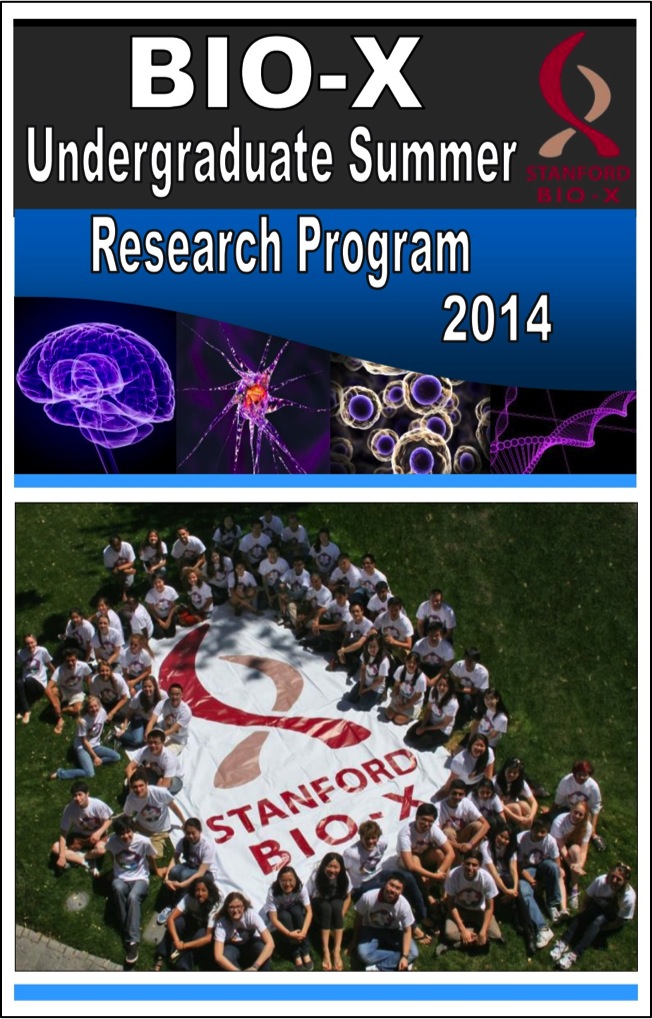 Bio-X UNDERGRADUATE SUMMER RESEARCH PROGRAM Bio-X UNDERGRADUATE SUMMER RESEARCH PROGRAMThe Bio-X Undergraduate Summer Research Program (USRP) supports undergraduate research training through an award designed to support interdisciplinary undergraduate summer research projects. The program is an invaluable opportunity for students to conduct hands-on research, learn how to carry out experiments in the laboratory, and develop the skills to read and analyze scientific literature. This program is eligible to Stanford students who want to work in the labs of Bio-X affiliated faculty. This year, nearly 160 students applied to the program, and 65 students were selected. Therefore, to date, 371 awards have been given to the Stanford undergraduate community to participate in the Bio-X Summer Research Program. The 2015 USRP officially ended last week, culminating in the USRP participants presenting their summer's research work during the poster session of last week's Bio-X IIP Seed Grant Symposium. In addition, during the last 10 weeks, a total 30 different Faculty Talks took place on the 10 Wednesdays in Clark Center's S360 where the USRP students had the opportunity to learn about other faculty's research. To learn more about USRP and the Faculty Talks, please email Dr. Hanwei Li. |
COLLABORATIONS: We are cultivating and are highly successful in building meaningful collaborations with numerous corporate colleagues. New collaborations through our core programs are highly encouraged. To learn about how to get involved, please contact Dr. Hanwei Li, or Dr. Heideh Fattaey.
SYMPOSIUMS: Bio-X also holds symposiums every year that highlight our core programs.
Thanks to all who came and attended last week's Bio-X IIP Seed Grants Program Symposium! It was extremely successful with 8 fantastic talks, and 170 posters presented during the reception (the largest poster session yet!). Nearly 400 people were in attendance of the event, with numerous discussions taking place throughout the event. Please go here to view the agenda and poster title list. Talks that were allowed to be videotaped will be uploaded as soon as possible.
All symposiums are listed on our website, including past IIP Seed Grants Program Symposiums, past Fellows Symposiums, and past Annual Symposiums.
If you'd like to learn more about the symposiums or any of the projects that were presented during the symposiums, please contact Dr. Hanwei Li with your questions.
News
 Most sensors designed to measure head impacts in sports produce inaccurate data, stanford bioengineers find
Most sensors designed to measure head impacts in sports produce inaccurate data, stanford bioengineers find
Bio-X Affiliated Faculty David Camarillo and Bio-X Fellow Lyndia Wu
Amid growing concern about sports-related concussions, some athletes are beginning to wear head-mounted sensors that gauge the speed and force of impacts they receive during competition. Scientists are still working on identifying baseline parameters for injury, but research suggests that certain skull motions can contribute to concussions, and constant in-game monitoring of those motions promises to help limit injuries. New research by Stanford bioengineers, however, reveals that many commonly used commercial sensors produce inaccurate data and that the error-prone measurements make it even more difficult to identify, evaluate and study an injury that is already difficult to quantify. The results are published online in the journal Annals of Biomedical Engineering. The researchers, led by David Camarillo, an assistant professor of bioengineering and, by courtesy, of mechanical engineering, looked at three of the leading methods for measuring head impacts: a sensor that adheres to the skin just below the ear, a sensor worn inside a skullcap, and sensors embedded in a mouthguard.
 Biomedical innovation takes off in India, with Stanford roots
Biomedical innovation takes off in India, with Stanford roots
Biodesign Director and Bio-X Affiliated Faculty Paul Yock
In 2007 India had little in the way of an entrepreneurial medical technology sector. It had few successful entrepreneurs to serve as role models, little venture capital, not much in the way of manufacturing and poor support for clinical trials. Stanford-India Biodesign fellows discuss the Indian approach to innovation, how they selected a medical need to focus on and how two popsicle sticks and a spring can improve pacemaker implantation. What the country did have was a rapidly growing population, a need for improved medical technologies and a rising generation of well-educated young innovators. That was the situation when a team from Stanford Biodesign decided to expand their scope to include an Indian arm to train young Indian innovators in their one-year fellowship program, with six months spent at Stanford and six in India. Despite a somewhat rocky start, the program has been so successful that as of this year it will be run entirely from India. The last class of fellows has recently returned from Stanford to finish up their fellowship in New Delhi. After this, all fellows will be trained in India, with input from Stanford collaborators. “I would say we are really pleased with the results so far in terms of taking newcomers to the process, starting them at zero and repeatedly and reliably being able to see a good idea coming out at the end,” said Paul Yock, founder and director of Stanford Biodesign. “And patients are getting treated from those good ideas.”
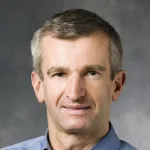 X-ray laser experiment could help in designing drugs for brain disorders
X-ray laser experiment could help in designing drugs for brain disorders
Bio-X Affiliated Faculty Axel Brunger
Scientists have revealed never-before-seen details of how the human brain sends rapid-fire messages between its cells. Researchers at the School of Medicine and the Department of Energy’s SLAC National Accelerator Laboratory mapped the 3-D atomic structure of a two-part protein complex that controls the release of signaling chemicals, called neurotransmitters, from brain cells. Understanding how cells release those signals in less than one-thousandth of a second could help launch a new wave of research on drugs for treating brain disorders. The experiments, at the Linac Coherent Light Source X-ray laser at SLAC, build upon decades of previous research at Stanford and the national lab. A paper describing the findings was published online Aug. 17 in Nature. “This is a very important, exciting advance that may open up possibilities for targeting new drugs to control neurotransmitter release,” said Axel Brunger, PhD, professor and chair of molecular and cellular physiology and professor of neurology and neurological sciences. “Many mental disorders, including depression, schizophrenia and anxiety, affect neurotransmitter systems.” Brunger, who is also professor of photon science at SLAC and a Howard Hughes Medical Institute investigator, is the senior author of the paper. The first author is postdoctoral scholar Qiangjun Zhou, PhD.
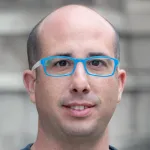 Researchers home in on biological cause of ALS
Researchers home in on biological cause of ALS
Bio-X Affiliated Faculty Aaron Gitler
A defect in how proteins are transported inside cells may be at least partially responsible for some symptoms of amyotrophic lateral sclerosis, according to a study by researchers at the Stanford University School of Medicine. The researchers found that cells with a mutation associated with the disease were hampered in their ability to move proteins into and out of the nucleus, a cell’s command center. The findings are among the first to open a window into the molecular causes of the deadly condition. Also known as Lou Gehrig’s disease, ALS is a progressive neuromuscular disorder. Although it’s unknown what causes many cases of the disease, a genetic stutter in a region of DNA called C9orf72 has been associated with the development of both ALS and another related neurodegenerative disorder called frontotemporal dementia. In this region, the DNA sequence is made up of a six-nucleotide pattern, which repeats abnormally in some people with ALS or FTD. “Healthy people have two to five repeats of this six-nucleotide pattern,” said Aaron Gitler, PhD, associate professor of genetics. “But in some people, this region is expanded into hundreds or thousands of copies. This mutation is found in about 40 to 60 percent of ALS inherited within families and in about 10 percent of all ALS cases. This is by far the most common cause of ALS, so everyone has been trying to figure out how this expansion of the repeat contributes to the disease.” Although the repeat occurs in a region of the gene called an intron, which does not normally carry protein-making instructions, researchers have speculated that a molecular miscue may cause a cell to mistakenly make RNAs and proteins from the expanded repeat. Gitler is the senior author of the study, which was published online Aug. 26 in Nature Neuroscience.
 Unique genes in Khoe-San people may lower risk of some pregnancy hazards
Unique genes in Khoe-San people may lower risk of some pregnancy hazards
Bio-X Affiliated Faculty Peter Parham
An examination of the immune genes of the southern African Khoe-San people has revealed a completely new kind of mutation, according to researchers at the Stanford University School of Medicine. The gene variant likely contributes to healthier babies, although the variant can also lower resistance to disease. The findings grew out of a long-term effort by Peter Parham, PhD, professor of structural biology and of microbiology and immunology, to understand how immune system genes make us reject organ transplants. A paper detailing the findings were published online Aug. 20 in PLOS Genetics. The gene variant was one of two they found that would be expected to alter the formation of the placenta during early pregnancy, leading to larger, healthier babies and a reduced risk of pre-eclampsia, a major cause of maternal death.
Events
| Bio-X Sept 29, 2015, 12:15 pm - 1 pm Clark Center S361, Stanford, CA Frontiers in Interdisciplinary Biosciences Pre-Seminar for Dr. Eugene Shakhnovich on Oct 1, 2015 Speaker: Dr. Judith Frydman, Stanford |
Bio-X October 1, 2015, 12:15 pm - 1 pm Clark Center, S360, Stanford, CA Frontiers in Interdisciplinary Biosciences: "Merging Molecular Mechanism and Evolution: Theoretical Concepts and Experimental Explorations of Biophysical Fitness Landscapes" Speaker: Dr. Eugene Shakhnovich, Harvard |
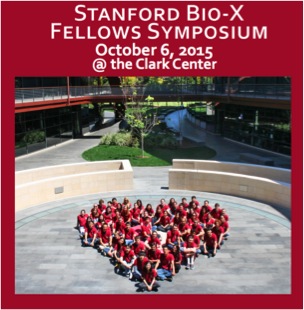 Bio-X Fellows Symposium Bio-X Fellows SymposiumTuesday, October 6, 2015 12 pm - 4 pm Clark Center Auditorium The Bio-X Fellowships are made possible by various gifts in order to promote interdisciplinary research by promising scientists who are working on projects that bridge the gap between biology and other fields. To date, over 150 Ph.D. students have received three-year fellowships through Bio-X. After completion of their training, our fellows continue to positively impact the scientific community through their roles as professors, co-founders of start-up companies, and research scientists, among others. 1:00pm Introduction CARLA SHATZ - David Starr Jordan Director of Stanford Bio-X 1:10pm Learning the Structure of Biomedical Relationships from Unstructured Text BETHANY PERCHA, Morgridge Family SIGF Fellow, Biomedical Informatics 1:30pm Wirelessly Powered, Fully Internal Optogenetics for Brain, Spinal, and Peripheral Circuits in Mice KATE MONTGOMERY, William and Lynda Steere Fellow and Bio-X Bowes Fellow, Bioengineering 1:50pm Abracadabra: Enabling Novices to Prototype Smart Medical Devices with Modular Electronic Building Blocks JOEL SADLER, Bio-X Bowes Fellow, Mechanical Engineering 2:10pm One-Minute Introductions of New Bio-X Bowes and Bio-X SIGF Fellows Poster Session in Clark Center Courtyard |
Resources
| Stanford University |
| Stanford Bio-X |
| Bio-X Seed Grants The Stanford Bio-X Interdisciplinary Initiatives Program (IIP) provides seed funding for high-risk, high-reward, collaborative projects across the university, and have been highly successful in fostering transformative research. |
| Office of Technology and Licensing "Techfinder" Search the OTL Technology Portal to find technologies available for licensing from Stanford. |
| Stanford Center for Professional Development - Take advantage of your FREE membership! - Take online graduate courses in engineering, leadership and management, bioscience, and more. - Register for free webinars and seminars, and gets discounts on courses. |
| Stanford Biodesign Video Tutorials on how FDA approves medical devices A series of video briefs recently produced by the Stanford Biodesign Program teaches innovators how to get a medical device approved for use in the United States. This free, online library of 60 videos provides detailed information on the Food and Drug Administration regulatory process, short case studies and advice on interacting with the FDA. |
To learn more about Stanford Bio-X or Stanford University, please contact Dr. Hanwei Li, the Bio-X Corporate Forum Liaison, at 650-725-1523 or lhanwei1@stanford.edu, or Dr. Heideh Fattaey, the Executive Director of Bio-X Operations and Programs, at 650-799-1608 or hfattaey@stanford.edu.

